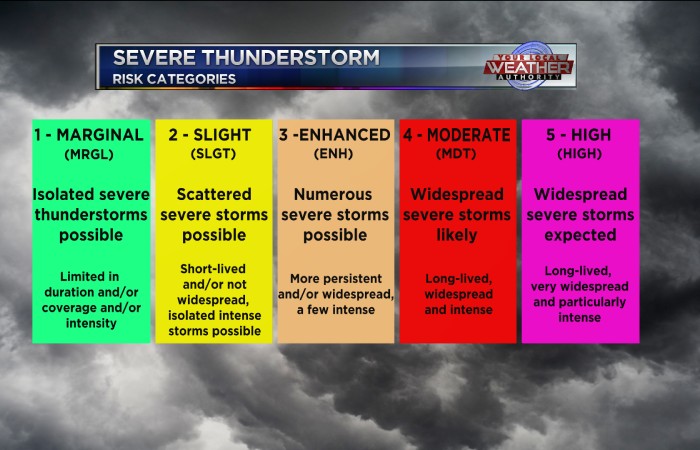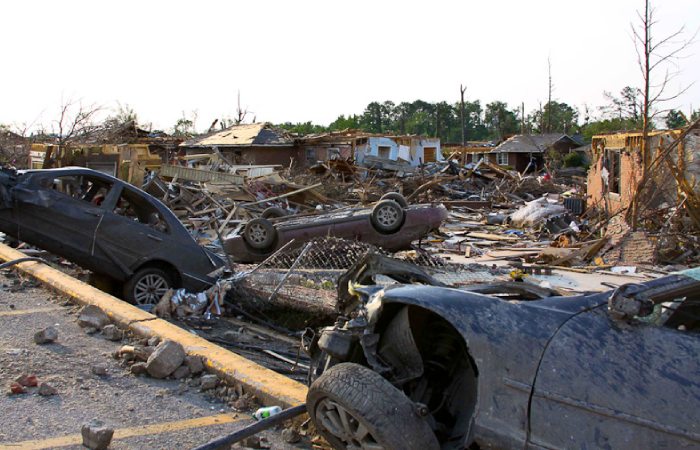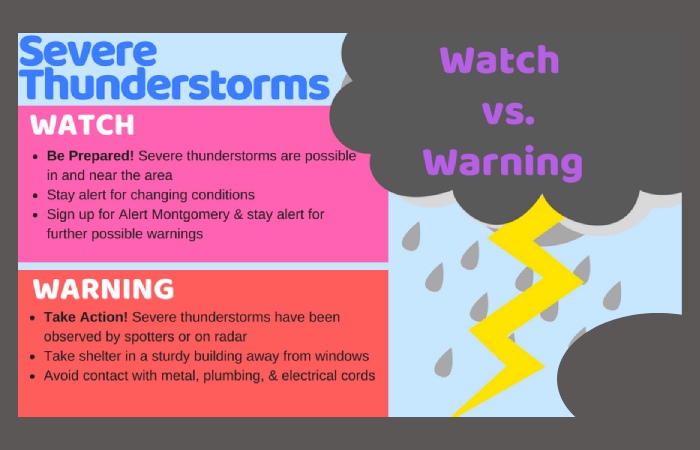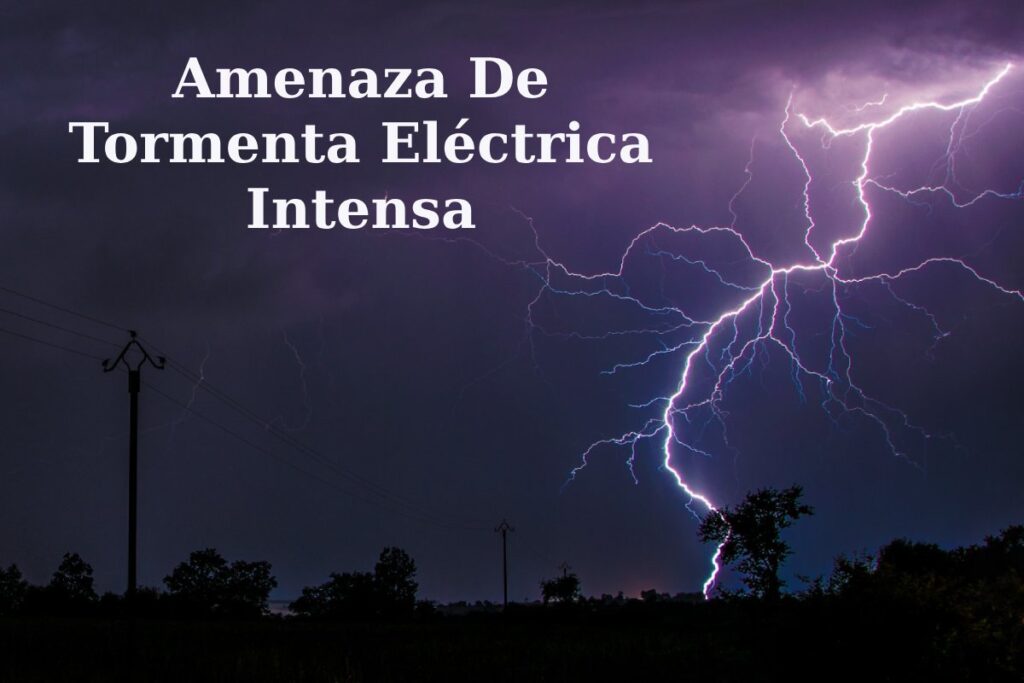Amenaza De Tormenta Eléctrica Intensa – Intense thunderstorms are weather phenomena that can be impressive and frightening. Flickering lights, thunder, and pouring rain can create a feeling of vulnerability in most people. In this article, we will discover the threat of an intense thunderstorm in-depth, analyzing its nature, impact, and the importance of being prepared to face this powerful natural event.
Understanding The Amenaza De Tormenta Eléctrica Intensa
The Anatomy of a Thunderstorm:
A thunderstorm is a complex weather event characterized by the interaction of warm, moist air and cold, dry air. It comprises various components, including updrafts, downdrafts, and rotating air currents. Thunderstorms can be categorized into three main types: single-cell, multi-cell, and supercell storms.
Formation Mechanisms:
Thunderstorms typically form when warm, moist air rises and encounters cooler, denser air. It causes the warm air to condense, forming clouds and releasing latent heat. The rising air continues to ascend, and as it cools and condenses further, it creates an updraft. This updraft leads to the development of cumulonimbus clouds, often called thunderstorm clouds.
Amenaza De Tormenta Eléctrica Intensa Phenomenon

Characteristics of Intense Thunderstorms:
Several key features, including towering cloud formations, frequent lightning, heavy rainfall, and strong winds, often distinguish intense thunderstorms. These storms can last for hours and cover vast geographical areas.
Lightning:
Lightning is a defining feature of intense thunderstorms. It occurs when electrical charges within the storm clouds create an electric discharge. Lightning can be incredibly destructive, causing wildfires, power outages, and even fatalities.
Hail and Tornadoes:
Some intense thunderstorms produce hail and tornadoes. Hailstones, formed within the storm’s updrafts, can reach sizes that cause significant damage to property and crops. Conversely, tornadoes are highly destructive, with their powerful winds capable of causing catastrophic destruction.
Three Causes of Amenaza De Tormenta Eléctrica Intensa
- Temperature Contrasts: One of the primary triggers for intense thunderstorms is a strong contrast in temperatures, often associated with weather systems like cold fronts. The collision of warm, moist air with a cold, dry air mass sets the stage for developing severe storms.
- Convective Instability: Intense thunderstorms thrive on convective instability, where warm, moist air is buoyant and rises rapidly. This rising air creates strong updrafts, leading to the growth of thunderstorm clouds.
- Topographical Influence: Local geographic features, such as mountains and valleys, can enhance the development of intense thunderstorms. Orographic lifting, a process where air is forced to rise over terrain, can lead to the formation of thunderstorms.
Impact of Amenaza De Tormenta Eléctrica Intensa

Intense thunderstorms can have several negative impacts, both human and environmental. Some of the most significant effects include:
- Property Damage: Lightning can cause fires, damage buildings and structures, and damage electronic equipment. Heavy rain can also cause flooding, which can significantly damage homes and property.
- Injuries and Deaths: Lightning is extremely dangerous and can cause severe harm or death to people outdoors during a thunderstorm. Additionally, flash flooding can pose a risk to life for those in affected areas.
- Power outages: Intense thunderstorms often result in power outages, as lightning can damage power lines and substations. It can have a significant effect on everyday life, affecting lighting, heating and cooling, as well as electronic devices.
- Damage to agriculture: Intense thunderstorms can damage crops and cause economic losses for farmers. The hail that sometimes accompanies these storms can also damage crops and vehicles.
- Risk to Aviation and Transportation: Thunderstorms can pose a significant hazard to aviation and ground transportation. Turbulence can make flights dangerous, and heavy rain can make roads slippery and prone to flash flooding.
Preparedness For Amenaza De Tormenta Eléctrica Intensa

Given the potential damage that amenaza de tormenta eléctrica intensa can cause, it is essential to be prepared to deal with them safely. Here are some steps that can help you prepare:
- Follow Weather Warnings: Stay informed about weather conditions and pay attention to thunderstorm warnings issued by authorities. It will allow you to take preventive measures in time.
- Safe Shelter: In a thunderstorm, seek shelter in a solid building or a hard-top vehicle. Avoid staying outdoors or under tall trees, as this increases the risk of being struck by lightning.
- Emergency Kits: Have an emergency kit that includes essential supplies such as drinking water, non-perishable food, flashlights, batteries, a first aid kit, and essential tools.
- Property Protection: Secure your property by taking preventative measures such as pruning trees near your home, installing lightning rods, and protecting sensitive electronic equipment.
- Avoid Outdoor Activities: During a thunderstorm, avoid outdoor activities like playing sports or swimming. Seek shelter in a safe place and wait for the storm to pass.
- Avoid Water: Do not go near bodies of water such as rivers, lakes, or swimming pools during a thunderstorm. Water is a good conductor of electricity and increases the risk of electrocution.
- Educate the family: Make sure everyone in your family knows the dangers of thunderstorms and knows how to act safely.
- Stay Informed: Use consistent sources of information, such as radio and weather applications, to follow the storm’s evolution and the authorities’ recommendations.
Conclusion
Intense thunderstorms are a formidable force of nature, capable of unleashing destruction and chaos. Understanding their causes, characteristics, and potential dangers is essential for preparedness and mitigation. As climate change continues to disturb weather patterns, the threat of intense thunderstorms may become more pronounced. Individuals, communities, and governments must work together to minimize the impact of these powerful meteorological events and adapt to an evolving climate.

